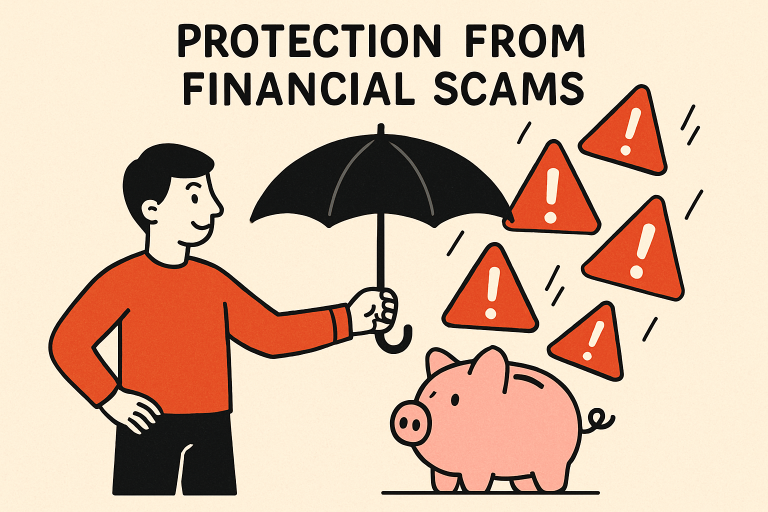Key Takeaways
- Financial scams and poor investments can jeopardize years of savings, but smart habits and awareness can significantly reduce your risks.
- Diversifying investments, performing due diligence, and understanding common scam tactics are crucial steps to safeguarding your funds.
- Legal professionals, regulatory resources, and trustworthy financial news sites provide essential, updated information to guide and protect investors.
Staying Ahead of Scammers: Why Vigilance Matters
Protecting your savings has never been more crucial. Scams and fraudulent investment opportunities continually evolve, becoming harder to recognize—even for seasoned investors. In 2023, reports of scam-related financial losses surpassed $10 billion in the United States, underscoring the scale and sophistication of fraudsters. Early awareness, along with expert legal support from Investment fraud lawyers in New York, can make the difference between safeguarding your money and falling prey to a financial trap.
Scammers often prey on fear and urgency, presenting seemingly lucrative opportunities with promises of high returns and minimal risk. These schemes may arrive through emails, social media, or unsolicited phone calls, making it critical to recognize their tactics before engaging. Establishing habits of diligence and skepticism protects not just your assets but your peace of mind as well.
Spotting The Red Flags of Financial Scams
Understanding the warning signs is your first line of defense. Common indicators that should raise suspicion include:
- Requests for confidential information via emails, texts, or unsolicited calls
- Guaranteed returns with little or no risk
- Pressure tactics urging immediate decisions
- Unregistered investment products, ambiguous business details, or advisors unwilling to provide verifiable credentials
If you encounter any of these, don’t rush. Instead, pause to verify information, seek second opinions from licensed professionals, or consult with trusted individuals who have financial experience. Even stepping back for a day or two can prevent irreversible losses.
Guarding Your Savings: Practical Strategies
Fraud prevention begins with foundational practices that every saver and investor should adopt. Here are several measures to implement:
- Stay informed: Ongoing awareness is key. Subscribe to scam alerts or follow trusted financial news outlets to learn of new fraud trends and investment pitfalls. Reputable sources like Reuters Markets offer up-to-date financial news and scam alerts for investors.
- Diversify: Spreading your investments across asset classes like stocks, bonds, real estate, and mutual funds lowers your overall risk profile. Never put your entire nest egg into one venture.
- Verify credentials: Always investigate potential financial advisors and investment firms. Use tools such as FINRA BrokerCheck to review their registration status, history, and any disciplinary actions.
- Use secure platforms: Only use well-established and reputable platforms for your financial transactions or online investing. Look for secure URLs (“https”), customer reviews, and clear business contact information.
Due Diligence: The Investor’s Secret Weapon
Diligent research cannot be overstated. Before investing, thoroughly research the company, asset, or advisor:
- Examine company reports, check regulatory filings, and confirm business addresses and credentials.
- Request all documentation in writing and examine it for vague promises or unfounded guarantees.
- Use resources like the SEC’s Investor Alerts and Bulletins page to check for recent fraud notices or disciplinary actions against investment products or professionals.
By setting aside time for comprehensive research, you not only avoid scams but also grow as an informed, confident investor.
Protecting Yourself Online
The rise of digital banking and investing means cyber scams are now as dangerous as traditional fraud. To keep your accounts and savings secure:
- Update your passwords regularly and use unique credentials for each account.
- Enable two-factor authentication wherever possible.
- Avoid public or untrusted Wi-Fi networks when accessing financial information.
- Scrutinize website URLs before entering personal data, especially if prompted by email links.
Cybersecurity measures are no longer optional—they are essential.
Recognizing Risky Investments
Not all high-risk investments are scams, but they can be just as damaging if not properly understood. Products such as speculative cryptocurrencies, certain real estate ventures, or investments promising extraordinary returns often lack regulation and adequate oversight. Ensure you:
- Understand your personal risk tolerance and never invest money you can’t afford to lose.
- Read disclosures and prospectuses for any investment opportunity.
- Avoid placing all your funds into a single, untested product or trend.
Savvy investors think long-term and remain wary of “get rich quick” narratives that push urgency over transparency.
What To Do If You Suspect Fraud
Act swiftly if you believe you’ve encountered a scam or risky investment. Start by documenting all communications, halting any additional transactions, and contacting your financial institution. Report the incident to regulatory bodies like the Federal Trade Commission (FTC) or the U.S. Securities and Exchange Commission (SEC). If you need legal guidance, seek out a professional experienced in financial fraud cases.
Prompt action and proper documentation improve your chances of minimizing losses and may aid in recovery efforts through appropriate legal channels. Consider changing your passwords and enabling two-factor authentication on your accounts to protect your assets. Stay vigilant for any further suspicious activity and follow up with your financial institution regularly. Educate yourself about common scam warning signs to prevent future incidents.
Conclusion: Building A Sustainable Financial Future
Preventing the loss of your savings to scams and poor investments is an ongoing process that requires continuous education, increased awareness, and the development of well-established, disciplined financial habits. It is essential to stay consistently updated on the latest financial news, employ robust digital security tools to safeguard your information, vet carefully every financial advisor or investment platform you consider, and not hesitate to seek guidance from seasoned, reputable financial professionals when in doubt. By implementing and maintaining these proactive strategies, you are taking concrete, deliberate steps to effectively protect your wealth, minimize risks, and build a sustainable, secure financial future that is resilient against the most common and insidious pitfalls that can threaten your economic well-being over time.


